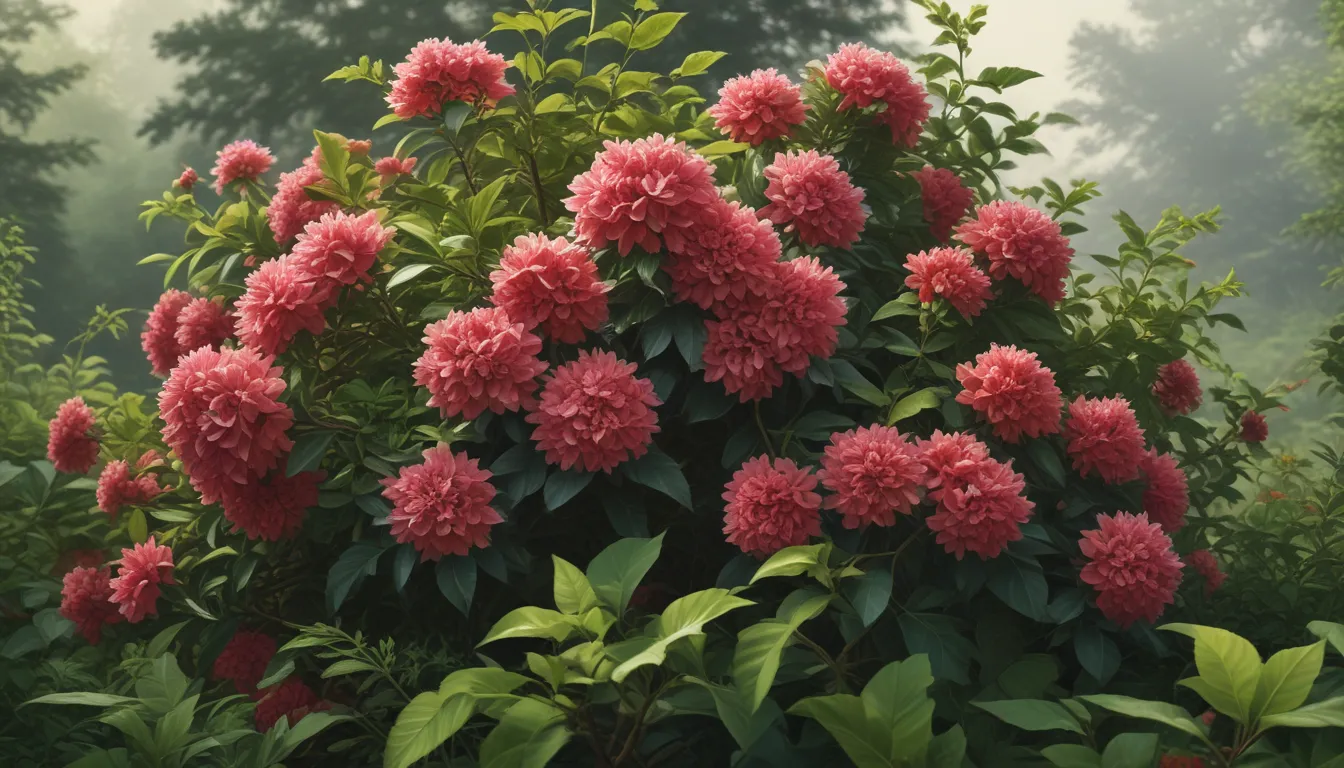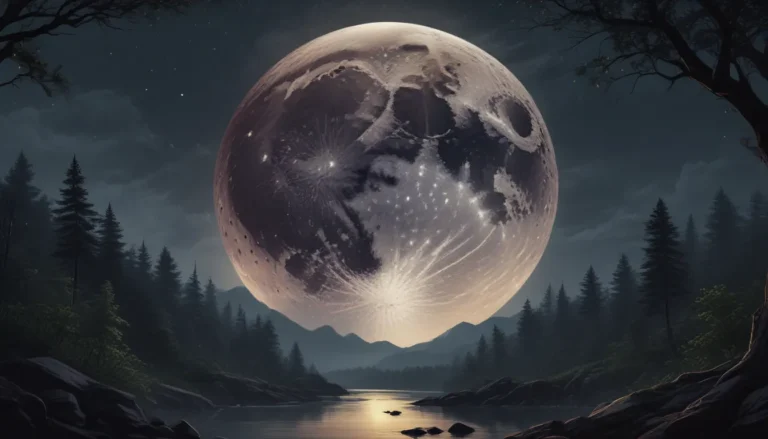The pictures we use in our articles might not show exactly what the words say. We choose these pictures to make you interested in reading more. The pictures work together with the words but don’t take their place. The words still tell you the important facts.
Welcome to the fascinating world of shrubs! These versatile plants with woody stems are not just ordinary greens; they play a crucial role in supporting biodiversity, providing habitat for wildlife, and enhancing the natural environment. In this article, we will delve into 19 enlightening facts about shrubs that will deepen your appreciation and understanding of these remarkable plants. From their historical significance to their diverse uses, shrubs have much to offer to both gardeners and nature enthusiasts. So, let's explore the wonders of shrubs together!
Key Takeaways:
- Shrubs are versatile plants with woody stems, providing habitat for wildlife, medicinal properties, and beautiful landscaping options. They play a crucial role in supporting biodiversity and enhancing the natural environment.
- Shrubs are not just ordinary plants; they have a rich history, serve multiple purposes, and contribute significantly to the environment. From air purification to providing edible fruits, shrubs are essential for our natural world.
Exploring the World of Shrubs
Let's start our journey by understanding the basics of shrubs and their significance in our environment.
Shrubs: The Woody Wonders
Shrubs are distinguished by their woody stems, which persist year-round, giving them structure and durability. Unlike herbaceous plants, shrubs add depth and texture to any landscape with their sturdy presence.
Diverse Species of Shrubs
Did you know that there are over 20,000 species of shrubs worldwide? From vibrant flowering varieties to evergreen specimens, shrubs come in a wide array of shapes, sizes, and colors, making them a diverse and abundant group of plants.
Evergreen vs. Deciduous Shrubs
Shrubs can be categorized as evergreen or deciduous. Evergreen shrubs retain their leaves year-round, providing year-round interest, while deciduous shrubs shed their leaves during the winter months, showcasing seasonal changes in their foliage.
Habitat for Wildlife
Shrubs play a vital role in providing habitat for wildlife. From attracting birds with their berries to offering shelter for small mammals, shrubs support biodiversity and create a balanced ecosystem.
Medicinal Properties of Shrubs
Throughout history, various shrubs have been used for their medicinal properties. From treating the common cold to addressing digestive issues, shrubs have been valued for their healing properties in traditional medicine.
Practical Uses of Shrubs
Now, let's explore the various practical uses of shrubs that go beyond their aesthetic appeal.
Landscaping with Shrubs
Shrubs are commonly used in landscaping to create beautiful garden borders, hedges, and privacy screens. Their attractive foliage and flowers enhance the visual appeal of any outdoor space.
Fragrant Shrubs
Some shrubs are famous for their intoxicating fragrance. Varieties like jasmine and gardenia are revered for their sweet scents, used in perfumes and essential oils for their aromatic qualities.
Preventing Soil Erosion
The extensive root systems of shrubs help prevent soil erosion by binding the soil and maintaining the landscape's integrity. Shrubs play a crucial role in preserving the land's structure.
Surviving in Various Climates
Shrubs have adapted to thrive in diverse climatic conditions, from arid deserts to freezing tundra. Their resilience and adaptability make them suitable for various environments.
Purifying the Air
Shrubs, like other plants, absorb carbon dioxide and release oxygen, contributing to air purification and improving overall air quality. They play a role in maintaining a healthy environment.
Unique Features of Shrubs
Discover the distinctive qualities and characteristics that make shrubs a valuable addition to any landscape.
Edible Fruits
Some shrubs produce edible fruits, ranging from blueberries and raspberries to rose hips and elderberries. These fruits are not only delicious but also nutritious, adding a touch of flavor to your garden.
Natural Dyes
Certain shrubs, such as indigo and madder, have been historically used to create natural dyes for fabrics. Their vibrant colors have been utilized in traditional textile production.
Shaping through Pruning
With proper pruning techniques, shrubs can be shaped into various forms, including topiaries, espaliers, and bonsai. Pruning helps maintain the shrub's form and promotes healthy growth.
Nesting Sites for Birds
The dense foliage of shrubs provides nesting sites for birds, offering a safe haven for them to build nests and raise their young ones. Shrubs play a crucial role in supporting bird populations.
Appreciating the Beauty of Shrubs
Explore the aesthetic appeal and visual delights that shrubs offer to enhance your outdoor spaces.
Vibrant Fall Foliage
Certain shrubs, like the burning bush and sugar maple, display stunning colors of red, orange, and yellow during the autumn season. Their vibrant foliage adds a touch of warmth to the landscape.
Invasive Species Awareness
While many shrubs are beneficial, some species can become invasive and outcompete native plants, causing ecological imbalances. It's essential to be mindful of the impact of invasive shrubs on the environment.
Propagation Methods
Shrubs can be propagated through various methods, including seed, cuttings, layering, or grafting. These techniques allow for the multiplication of desirable traits and the expansion of shrub populations.
Symbolic Meanings
Throughout history, shrubs have held symbolic meanings in different cultures, representing love, protection, and spirituality. Their significance transcends mere botanical attributes.
Urban Beautification
Integrating shrubs into urban environments can enhance the aesthetics of cities, mitigate noise pollution, and improve residents' overall well-being. Shrubs contribute to creating vibrant and green urban spaces.
Embracing the Importance of Shrubs
In conclusion, shrubs are integral to our natural environment, offering a myriad of benefits to both humans and the ecosystem. By understanding their diverse uses and unique qualities, we can appreciate the vital role that shrubs play in maintaining ecological balance.
With their adaptability, beauty, and practical applications, shrubs have been valued for centuries in various fields, including landscaping, agriculture, and medicine. Whether you're a seasoned gardener or a nature enthusiast, exploring these 19 facts about shrubs will deepen your knowledge and foster a greater appreciation for these remarkable plants.
Remember to explore the different types of shrubs, care for them diligently, and observe their interactions with the environment. Planting shrubs in your garden not only enriches the landscape but also supports local wildlife and promotes a healthy ecosystem. Let's celebrate the beauty and importance of shrubs in our natural world!
FAQs
Explore some common queries and learn more about shrubs to enhance your understanding of these remarkable plants.
Q: What is a shrub?
A: A shrub is a woody plant with multiple stems and is smaller in size compared to trees. They usually have a mature height of less than 20 feet.
Q: What are some benefits of planting shrubs?
A: Planting shrubs can provide various benefits such as improving air quality, conserving water, reducing soil erosion, attracting wildlife, and adding aesthetic value to your surroundings.
Q: How do I choose the right shrub for my garden?
A: Consider factors such as sunlight requirements, soil type, climate conditions, and desired height and spread when selecting a shrub for your garden. Consulting with a local nursery or gardening expert can also be helpful.
Q: How do I care for shrubs?
A: Proper care for shrubs includes watering them regularly, providing appropriate nutrients, pruning to maintain shape and size, and protecting them from pests and diseases.
Q: Can shrubs be used for privacy screening?
A: Yes, many shrub species are excellent choices for privacy screening due to their dense foliage and ability to grow in a compact manner. Some popular options include Arborvitae, Privet, and Boxwood.
Q: Can I grow shrubs in containers?
A: Yes, certain shrub varieties, especially dwarf and compact ones, can be grown in containers. However, adequate care should be taken to provide sufficient soil, water, and sunlight for their healthy growth.
About Us
At Goodfangsm.life, we are dedicated to providing valuable and engaging content that enriches your knowledge and appreciation of the natural world. Each fact on our site is contributed by real users like you, ensuring diverse insights and information that inspire curiosity and learning. Trust in our commitment to quality and authenticity as you explore the wonders of nature with us.
As you immerse yourself in the beauty of shrubs and their essential role in our environment, remember to pause and appreciate the intricate details of these remarkable plants. Whether you're admiring their vibrant colors or observing wildlife interactions, shrubs offer an enriching experience that connects us to the harmony of nature. Let's continue to explore, learn, and celebrate the wonders of shrubs in our world.






